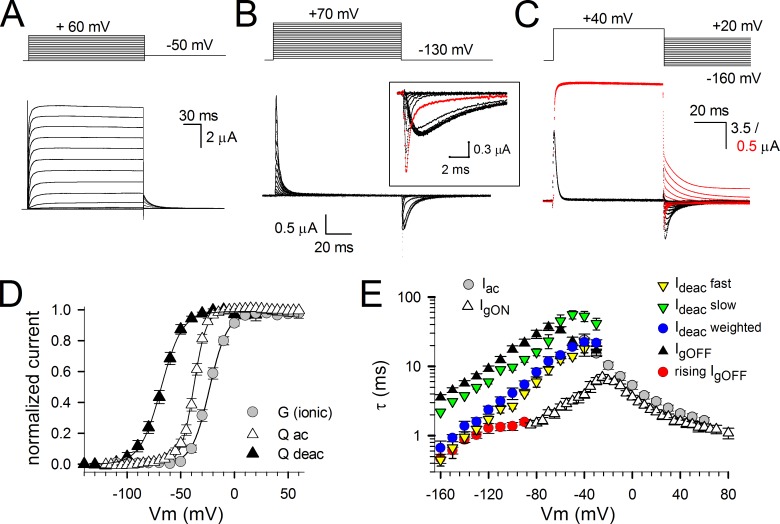Figure 5.
Ionic and gating currents from Kv1.2; behavior of the VSD and BC gates. (A) Activating ionic currents from WT Kv1.2, a member of the Shaker family that displays a more modest C-type inactivation process. (B) Gating current recordings from Kv1.2 after depletion of K+. Current recordings were obtained using the activation pulse protocol shown on top. The holding potential was −130 mV, and oocytes were depolarized in 5-mV increments from −130 to 70 mV (for clarity only, current traces are shown every 10-mV increment). Similar to Shaker, there was a gradual slowing in IgOFF decay when prepulse depolarization voltages became stronger (red trace is IgOFF after a −40-mV prepulse). (C) Superposition of scaled deactivation ionic (red traces) and gating currents (black traces) from Kv1.2 obtained from the same oocyte using the voltage protocol shown on top. The scales for gating and ionic currents are shown in black and red, respectively. (D) Voltage dependence of BC gate opening (GV curve) and charge movement (QV curves) using an activation (Qac) or deactivation (Qdeac) protocol. Both GV and QV values were normalized, and for both GV and QV curves, the average fit to a Boltzmann equation is shown. (E) Mean time constant ± SEM for IgON decay (open triangles), IgOFF decay (closed triangles), rising phase of IgOFF (red circles), Iac (gray circles), fast component of Ideac (yellow inverted triangles), slow component of Ideac (green inverted triangles), and the weighted Ideac kinetics (blue circles) obtained in a similar way as described for Shaker (Fig. 1), with an n of at least six independent oocytes analyzed. Error bars represent SEM.

